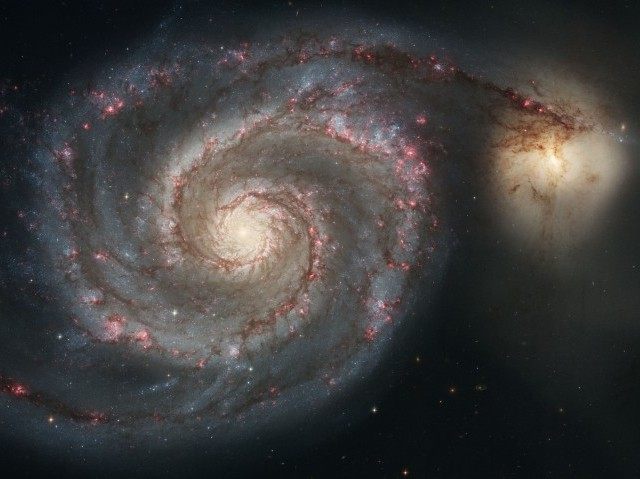International Business Times reports on a remarkable discovery by Caltech astrophysicist Ranga-Ram Chary which might constitute the first tangible evidence of parallel worlds: the light of another universe shining through the aftermath of the Big Bang.
Chary, a researcher at Planck’s US data centre in California, was mapping CMB when he spotted the unexpected glow. In his paper, Spectral Variations of the Sky: Constraints on Alternate Universes, he said that while there is a 30% chance the fluctuations are nothing unusual, there is also the possibility they provide evidence of a multiverse.
“It could also possibly be due to the collision of our Universe with an alternate Universe whose baryon to photon ratio is a factor of around 65 larger than ours,” he wrote.
Physicists have long postulated the existence of alternate universes, seeing our own incomprehensibly vast (but maybe not infinite) universe as but one of many, floating through a multi-dimensional space that defies human efforts to define time, space, and distance. Or, as popular culture presents the concept, maybe there’s another universe filled with the same people, except all the good people are evil and favor goatees.
In essence, Chary filtered out every form of matter and radiation from our own universe, and yet parts of the sky were still brighter than they should have been — 4,500 times brighter, to be precise.
Jens Chluba, from the University of Cambridge, commented: “This signal is one of the fingerprints of our own universe. Other universes should leave a different mark.”
The multiverse explanation says that some protons and electrons might have come into contact with another universe – a collision that made them much brighter. “To explain the signals that Dr Chary found with the cosmological recombination radiation, one needs a large enhancement in the number of [other particles] relative to photons,” Chluba says. “In the realm of alternative universes, this is entirely possible.”
UPI quotes Chary describing this phenomenon as “cosmic bruising,” caused by “one universe bumping up against another universe.” Another colorful metaphor presented in this report describes Chary’s mysterious light as “the ancient shrapnel of the Big Bang.”
Of course, there are skeptics who suggest other explanations, ranging from an imperfect understanding of the properties held by matter in the first few millennia after the Big Bang. (A few hundred thousand years was but the blink of an eye on the scale of these cosmic events.) We might also have an imperfect understanding of how the laws of physics, and even the passage of time itself, functioned in the newborn universe.
It is not, to put things mildly, an easy chapter of cosmic history to study. It’s also difficult to draw conclusions about alternate universes we cannot visit or observe. But perhaps one day we’ll find a little leftover junk from that other universe floating in our own space. If “cosmic bruising” did indeed occur, then the particles from this alternate universe would still be in ours somewhere, since matter and energy cannot be destroyed — they merely change structure. The particles from Chary’s glow would still be around here somewhere.
Of course, “here” means “the entire universe,” and we’re talking about hunting for subatomic particles, so it would take a good long while to find them. If you happen to stumble across a particle that does not appear native to this universe, please contact your local astrophysicist immediately.

COMMENTS
Please let us know if you're having issues with commenting.